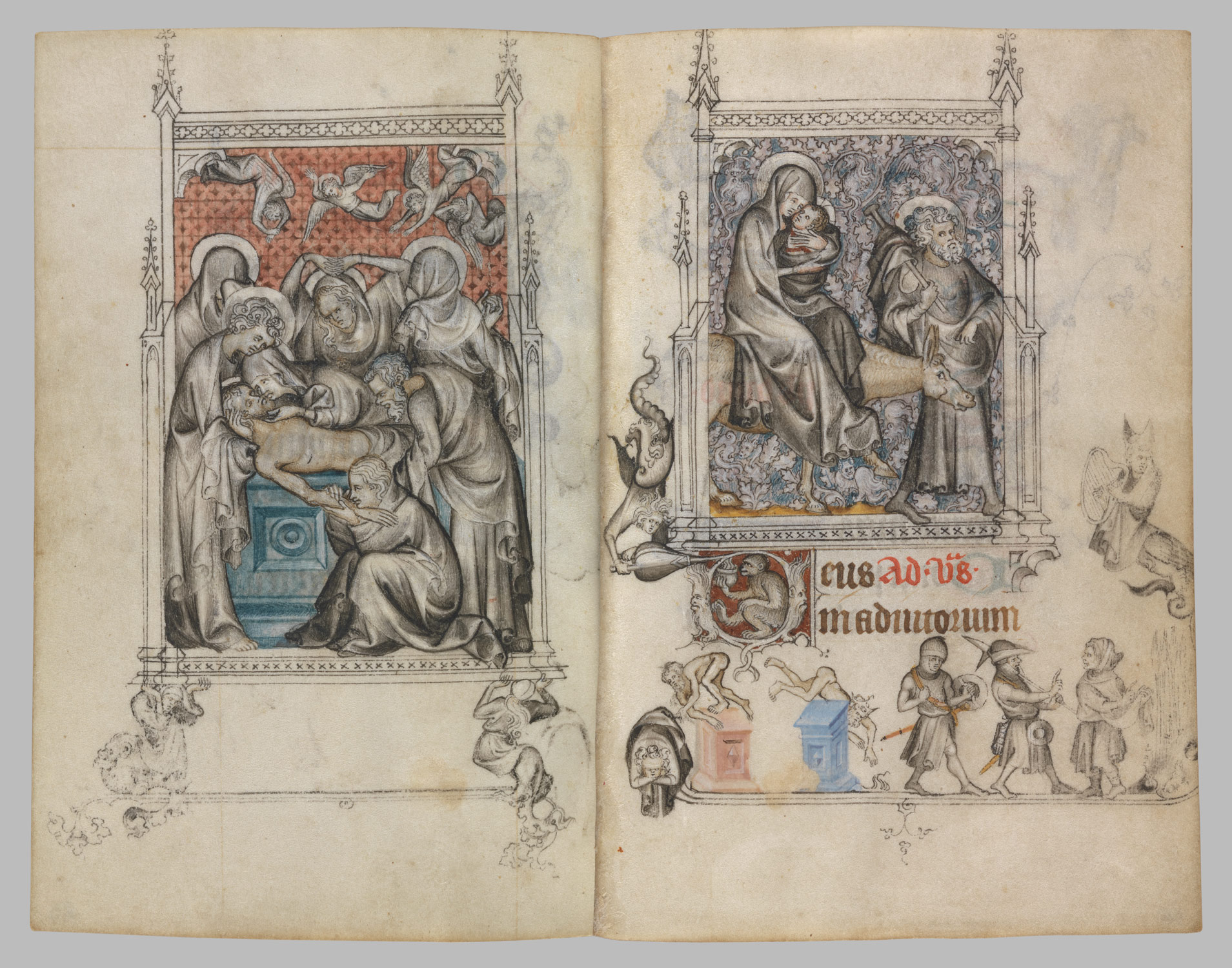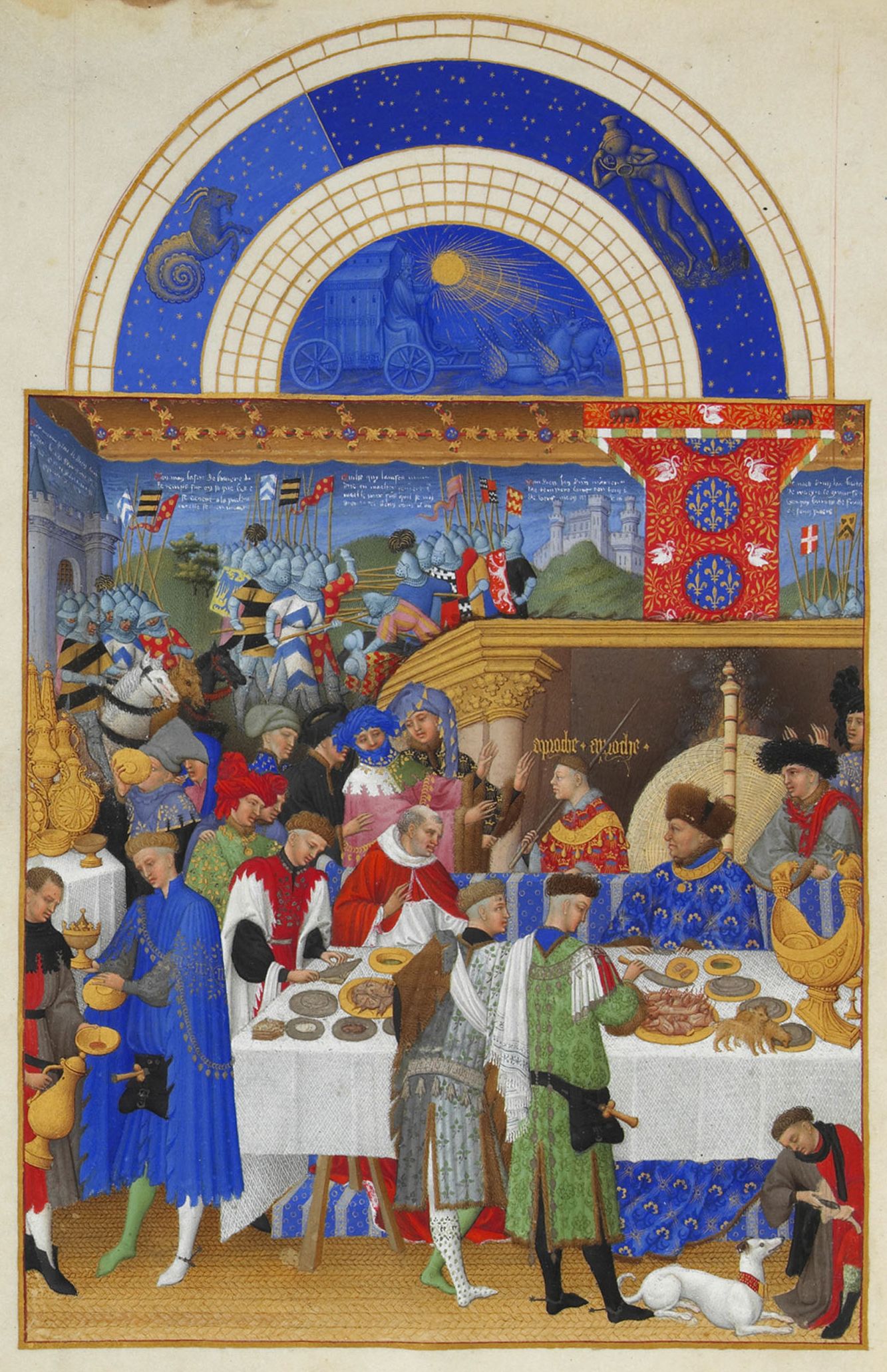What is the Book of Hours?

A leaf from the Book of Hours (ca 1460) (https://commons.wikimedia.org/wiki/File:French_-_Leaf_from_Book_of_Hours_-_Walters_W26976R.jpg)
The Book of Hours is a religious text containing sets of prayers, psalms, and religious texts made for the purpose of devotion to the Virgin Mary. Originating from the Psalter recited by holy people, The Book of Hours is a selection of texts combined from the original text of the Psalter.
Thousands of editions of the book were printed during 1200-1700. What contributed to the popularity of this certain book was the boom in literacy that ultimately led to more books being produced and bought, as well as the main selling point: accessibility, affordability, and customization.
The content of each book was different depending on the patrons needs but are all in the spectrum of reflection and devotion. Almost all books contain the following: A calendar of feasts, extracts from the four gospels, mass reading for the feasts, psalms, devotions to the Virgin Mary, and more.
Patrons could choose to add what texts they wanted, as well as things ranging from detailed initials to fully illuminated illustrations. The books main practices consisted of text to be recited at 8 different times of the day giving praise to the Virgin Mary. Most illuminations in the book are to illustrate the key moments in Mary’s life. The scale of these illustrations would vary on the book and the patron.
Lavish Examples
The Hours of Jeanne d’Evreux, Queen of France
This version of the Book of Hours was commissioned by Jeanne d’Evreux, queen of France from Jean Pucelle around 1324-1328. It contained 209 folios, 25 full page paintings accompanied with images from the Infancy and Passion of Christ and some scenes of the life of Saint Louis.
Taking a page from the book, we can see the depictions of religious figures such as Christ in the frames drawn in Grisaille. Near the bottom there are figures of common people that populated the streets of medieval Paris also. Taking into consideration the keen observation skills of each figure drawn in the Late Gothic style, we can appreciate the craftsmanship that was preserved throughout the ages.

A page from the Book, the gentle application of Grisaille and intricate details combined with colour create a sense of story in each page (https://www.metmuseum.org/toah/works-of-art/54.1.2/)
Très Riches Heures du Duc de Berry
“The very Rich Hours of the Duke of Berry”
One of the most notable examples of a Book of Hours, this illuminated manuscript version of the Book of Hours shows the International Late Gothic style in contrast to the Gothic style shown in the Book of Hours commissioned by Jeanne d’Evreux.
Commissioned from the Limbourg brothers by John, The Duke of Berry the piece contains 206 leaves of fine parchment, measuring around 30cm tall and 21.5 cm wide. The book is decorated with hundreds of coloured illustrations, each painted with rare materials, pigments, and illuminated with gold.

A page from the Calendar, we can imagine how extravagant the rest of the book is. (https://en.wikipedia.org/wiki/File:Les_Tr%C3%A8s_Riches_Heures_du_duc_de_Berry_Janvier.jpg noopener)
Unfortunately, the commission was never presented to the original commissioner as the Limbourg brothers and the Duke of Berry died in 1416. The book was worked on by different artists and commissioned by different people, and was finished in 1485-1489 by Jean Colombe.
Lesson Reflection
I think today’s class was definitely very interesting and thought provoking. I didn’t really know what kinds of material was used for writing nor did I have any idea as to what they wrote on either. What was astonishing to me was the value placed on the knowledge of how to make paper. Although there are options like parchment and papyrus, both medias showed a weakness that bamboo paper didn’t seem to have. The lecture about the first printing machine and text blocks was also intriguing, especially the ideas of Bi Sheng.
I think coming out of this lecture today, I’ve learned to appreciate paper more as a object that holds a unexpected history, as well as knowledge about “The Lazy Susan” (lol). Now I can eat at restaurants and name the object that spins.
Citation:
https://en.wikipedia.org/wiki/Book_of_hours
https://www.metmuseum.org/toah/hd/hour/hd_hour.htm
https://en.wikipedia.org/wiki/Tr%C3%A8s_Riches_Heures_du_Duc_de_Berry
https://www.metmuseum.org/toah/works-of-art/54.1.2/
https://www.wdl.org/en/item/354/
Leave a Reply